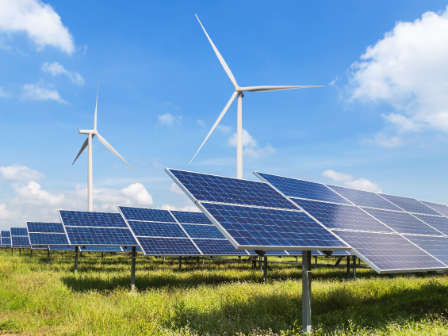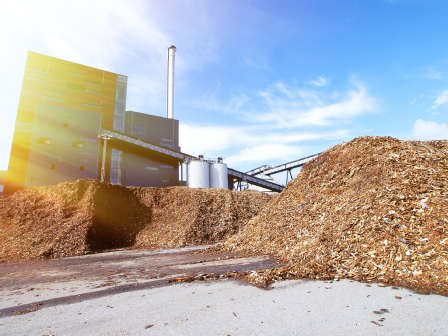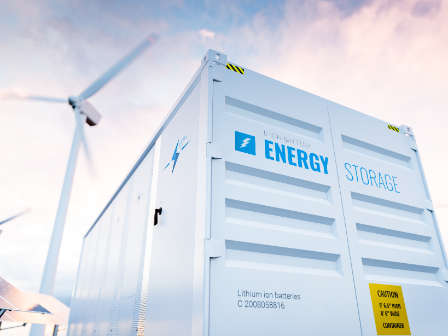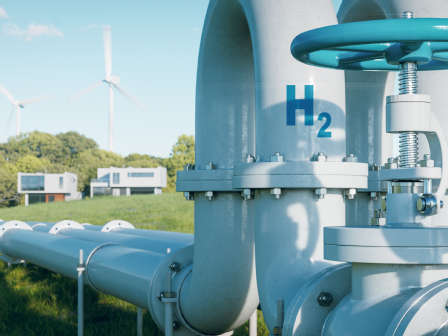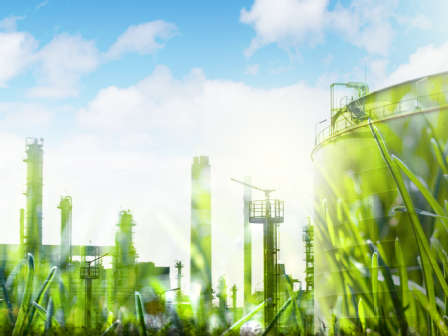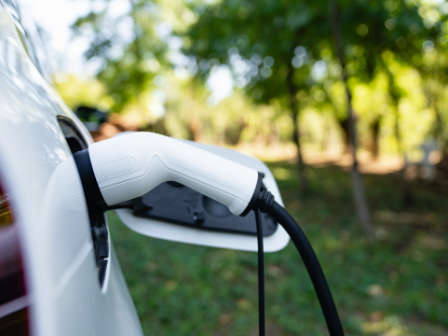.jpg)

Decarbonization through electrification: Increased flexibility in both generation and consumption is required!
44 photovoltaic parks, 321 wind farms, and over 130 pumped storage and run-of-river power plants ensure a secure, sustainable, and efficient energy supply for the entire country and beyond Austria's borders.
VERBUND's vision for a sustainable energy future The power is in our hands. With the help of nature. For more than 75 years and in the future.
The system vision presented below is based exclusively on the assessments and visions of the mentioned stakeholders. APG is merely providing the modeling system in the context of the zusammEn2040 initiative — APG’s position can therefore not be inferred from the statements.
VERBUND is Austria's leading energy company and one of the largest producers of electricity from hydropower in Europe. Almost 100% of our electricity is generated from climate-friendly, renewable energy sources.
VERBUND is the key player for the success of the energy transition in Austria. To carry on supplying Europe with reliable electricity, it is important for us to make optimal use of all energy sources. In addition to hydropower, we therefore also rely on PV and wind energy, which complement each other perfectly.
The challenges ahead require a unified approach across the entire company, which VERBUND is pursuing with its Mission V. Mission V is a long-term and comprehensive transformation program that represents our determination to tackle the climate crisis by being a force for change. This program is based on the VERBUND Strategy 2030 with its three main objectives: strengthening the integrated domestic market, expanding renewable energies in Europe, and establishing ourselves as a European hydrogen player.
To successfully achieve the energy transition, it is essential to coordinate the expansion of renewable energy sources, especially solar and wind power, and the storage options that are necessary in this context, such as pumped storage power plants, batteries, and hydrogen technologies. This development must be reconciled with consumer needs and expectations to ensure a stable, efficient, and sustainable energy supply.
Projects such as "zusammEn2040" are proving to be extremely helpful tools for effectively mapping the complex interaction between energy generation, storage, and consumption. They provide the necessary modeling tools to simulate and analyze future scenarios to promote a sustainable and efficient energy supply.
"The transition to renewable energies is comparable to open-heart surgery. We have to make the change without jeopardizing the security of supply and the stability of the systems. That is a huge challenge!"
Results at a glance
The expansion of renewable energies in Europe is key to achieving climate neutrality by 2050. With the "European Green Deal" and the "EU Clean Industrial Deal", the EU is pursuing ambitious goals to reduce dependence on fossil fuels and transform industry in an environmentally friendly way. Massive investments in wind, solar and hydrogen are intended to promote innovative technologies that enable a sustainable and future-proof economy. This course not only supports climate protection, but also creates jobs and strengthens Europe's competitiveness on the global market.
The expansion of renewable energies is crucial for creating a climate-neutral energy system. Solar, wind, and hydro power are not only environmentally friendly but also virtually inexhaustible. The increased use of these technologies can significantly reduce CO2 emissions and reduce or replace the use of fossil fuels. Innovative storage solutions and smart grids facilitate a reliable energy supply despite the volatile nature of renewable sources. Investments in the energy transition are investments in the domestic economy. More renewable domestic energy in the system reduces dependence on fossil fuel imports and lowers prices in the long term. A sustainable energy system promotes environmental protection and secures the future of our planet.
The electricity system of tomorrow requires a high degree of flexibility in order to optimize the integration of renewable energies. Pumped storage power plants already offer a proven way of storing surplus energy and making it available when needed. In addition to these traditional solutions, battery storage systems are becoming increasingly important as they enable rapid responses to load changes. New innovations such as saltwater batteries could offer sustainable and cost-effective alternatives. Such storage technologies are crucial to ensuring security of supply and keeping the power grid stable while the share of renewable energy continues to grow.
Pumped storage power plants, batteries and hydrogen technologies each play an essential role in the energy transition. Batteries are ideal for short-term storage and flexibility in order to react quickly to fluctuations in demand. Pumped storage power plants, on the other hand, enable the medium to long-term storage of large amounts of energy, which is important for the stability of the electricity grid. Hydrogen technologies allow the long-term storage of surplus energy in hydrogen, which can be converted back into electricity when required. As a leading electricity company, Verbund AG is making a decisive contribution to shaping this transition by contributing its know-how and infrastructural resources. The expansion of these technologies strengthens Austria's role in the international energy transition.
Reducing CO2 emissions is crucial to limiting global warming and mitigating the effects of climate change. CO2 is one of the main greenhouse gases released into the atmosphere, mainly through the burning of fossil fuels for energy, heat and in industry. A comprehensive decarbonization of these sectors is necessary to achieve the climate targets.
In the energy sector, this means the transition from fossil fuels to renewable energies such as wind, solar and biomass. In the heating sector, sustainable heating solutions, e.g. heat pumps and district heating, must be implemented. Industry must become more energy efficient and develop alternative processes to reduce emissions.
The EU Emissions Trading System (ETS) plays a central role in this process by creating a financial incentive to reduce emissions. Companies must purchase certificates for their CO2 emissions, which motivates them to invest in lower-emission technologies. A functioning ETS can lead to a significant reduction in greenhouse gas emissions and promote a market-oriented approach to achieving climate targets. Overall, CO2 reduction is essential to secure a sustainable and climate-neutral future.
Assumptions for the VERBUND system vision
To reach their climate goals, the countries of Europe have to move away from fossil fuels and achieve a comprehensive transition toward renewable and environmentally friendly resources.
In Austria, we have already achieved this to a large extent in the electricity sector thanks to our hydropower plants and ongoing efforts to further expand solar, wind, and biomass. But the real journey has only just begun.
Currently, the share of non-renewable energy sources is particularly high in the transport and heating/cooling sectors.
The results of the model-based analyses in the context of zusammEn2040 in detail
Based on the assumptions made by VERBUND and the model parameters entered as a result, the energy system model calculates an "optimal" and cost-efficient energy system on the path to 2050. The most important findings are presented below.
Decarbonization of the energy sector is a prerequisite for achieving european climate neutrality by 2050
Under the European Green Deal, the economy and society must change in a way that from 2050 there are no net greenhouse gas emissions. By 2030 CO2 emissions must be reduced by 55%. These targets imply an ambitious transformation of the entire energy system.
Verbund has evaluated a scenario in the context of the "zusammen2040" initiative, where the energy system model calculates an "optimal" energy system for 2050.
The figures below show the key transformation parameters in this energy system. The decline and elimination of fossil fuels such as methane and oil are clearly visible, while electrification, the use of biogas/biomass, and green H2 production are becoming increasingly important.
Key conversion technologies in AT following decarbonisation
Key conversion technologies in AT in 2050
In Austria, electricity generation is already largely climate-neutral. However, to achieve true climate neutrality, the entire economy must become CO2-free – this includes all sectors. In addition to the electricity sector, the consumption sectors of industry, transport, households, and agriculture must also transition to renewable energy sources. The expansion of renewable energy sources must be significantly accelerated.
It is particularly important to realize that the energy transition cannot be achieved by Austria alone – it has to happen all across Europe.
If the transition is successful, Europe could serve as a model for other regions of the world by showing how decarbonization can be implemented effectively. This would not only enable Europe to achieve its ambitious climate targets but also allow it to exert a positive influence on the reduction of CO2 emissions on a global scale. Decarbonization is a global process that requires global cooperation and innovative approaches.
Power generation capacities in Europe in GW
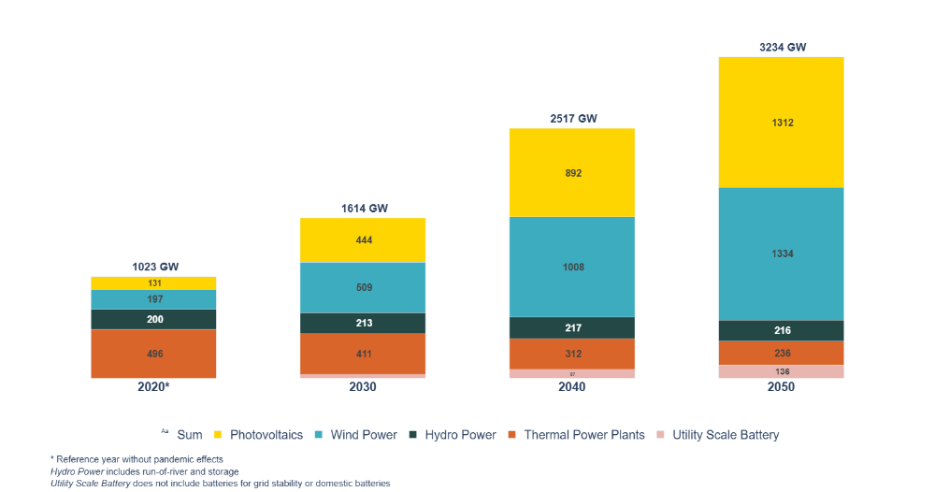
Decarbonization
Climate neutrality means achieving a balance between CO2 emissions and the absorption of carbon from the atmosphere into carbon sinks.
To achieve net-zero emissions, all greenhouse gas emissions worldwide must be offset by carbon sequestration. A carbon sink is a system that absorbs more carbon than it releases. The most important natural carbon sinks are soils, forests, and oceans. Biomass Carbon Capture and Storage (BECCS) will also play an important role in achieving climate neutrality. This technology aims to reduce carbon emissions and achieve negative emissions.
The process involves the use of biomass (organic material such as wood, plant waste, or special energy crops) to generate energy. During growth, the biomass absorbs carbon dioxide (CO2) from the atmosphere through photosynthesis.
In a BECCS system, biomass is burned or otherwise converted into energy, releasing CO2. This CO2 is then captured (carbon capture) before it enters the atmosphere. The captured CO2 is then stored in geological formations deep underground (carbon storage), for example, in former natural gas fields or saline aquifers.
Some economic sectors, such as steel and aluminum production, the chemical industry, heavy-duty transport, and agriculture, are considered "hard-to-abate" because their CO2 emissions are particularly difficult to reduce; it is therefore crucial to develop innovative technologies and effective strategies for carbon sequestration while promoting the expansion of natural carbon sinks.
European CO2 emissions in Mt CO2 - Europe will be climate neutral by 2050!
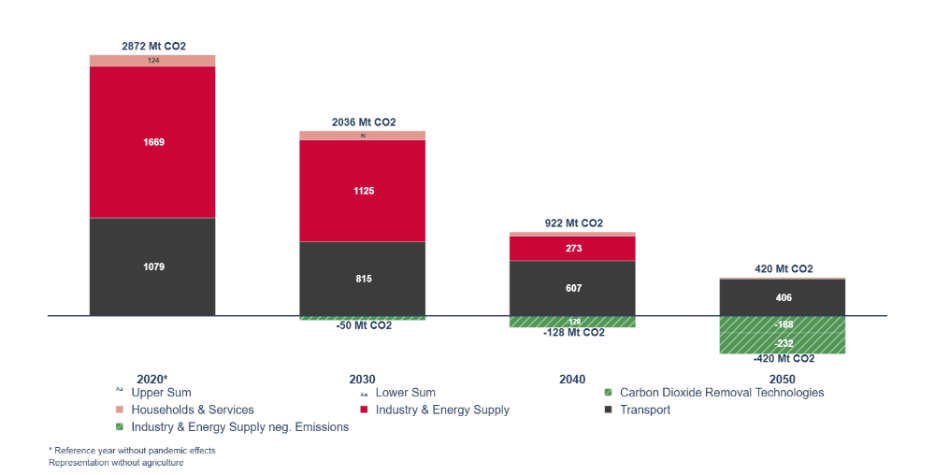
The electricity system of tomorrow needs flexibility and storage
The necessary expansion of wind and solar energy poses a fundamental problem: the production depends on natural conditions and can therefore fluctuate. To compensate for these fluctuations, it is essential to simultaneously expand all available storage technologies. This ensures that surplus energy can be stored efficiently and used flexibly when needed, guaranteeing a stable and reliable energy supply.
Electricity generation from wind and PV is rising sharply in Austria until decarbonisation is achieved. Considering the increasing electricity consumption, this will lead to imbalances and flexibility requirements that will have to be addressed or met by additional storage options and flexible consumers.
Wind, photovoltaics and pumped storage today in AT in MWh
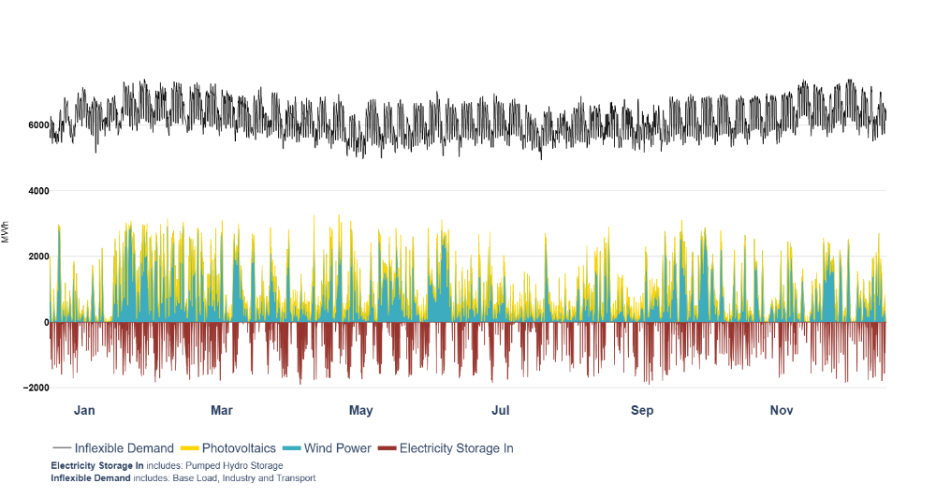
Sector-coupled interaction of wind, PV, power-to-gas, and electricity storage after decarbonization in Austria in MWh
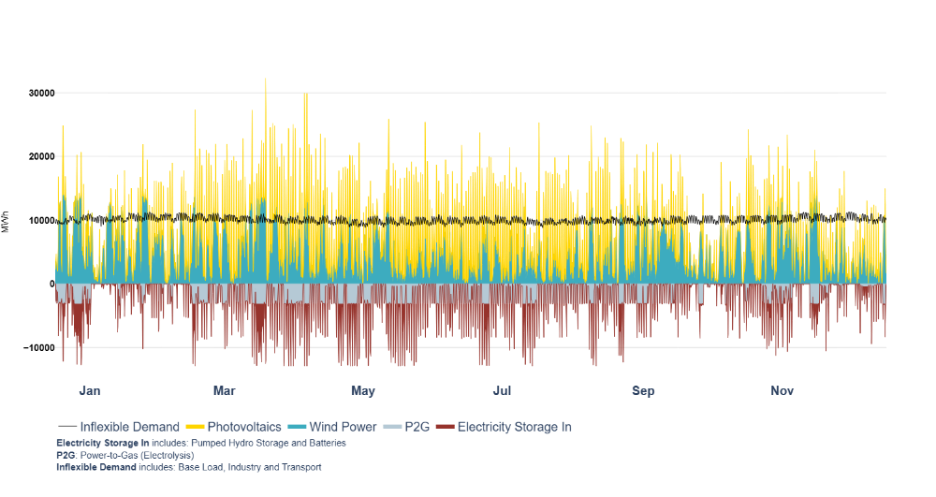
Pumped storage power plants, batteries, and hydrogen technologies each play an important role in the energy transition. Batteries are ideal for short-term energy shifting and storage and can respond quickly to fluctuations in demand.
Ramp-up of large-scale battery storage options in Europe in GW (excluding storage for grid stability and decentralized storage in households and businesses)
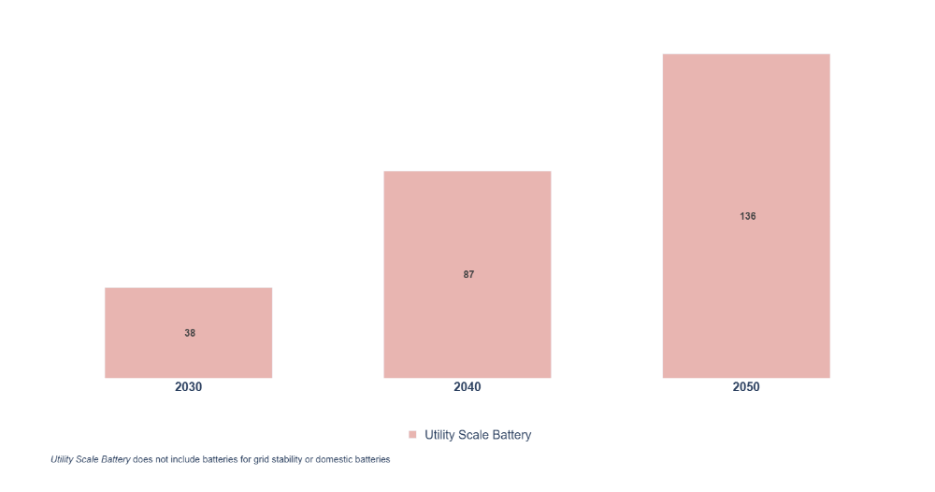
Pumped storage power plants are ideal for the medium to long-term storage of large amounts of energy. Hydrogen technologies offer the possibility of storing surplus energy in the long term in the form of hydrogen, which can be converted back into electricity when needed. The VERBUND scenario includes 87 GW of battery storage capacity across Europe in 2040. Green H2 production based on electrolysers will amount to around 615 TWh in Europe in 2040.
As a leading electricity company, VERBUND plays a key role since it has the necessary expertise and infrastructure resources to significantly support and shape the ongoing transformation. The continual expansion and optimization of these technologies offer Austria the opportunity to actively shape the energy transition not only on a national but also on an international scale.
Summary
As the expansion of renewable but non-dispatchable energy sources such as wind and solar power is urgently needed, all types of storage technologies (including pumped storage power plants, batteries, and hydrogen) will be indispensable in the future. Austria's geographical topology offers ideal conditions for this: the country has a large number of pumped storage power plants and is strategically located in the heart of Europe.
This enables Austria to be a key provider of flexibility solutions that can be used throughout Europe.
Efficient and adequate grid planning is essential to fully exploit this potential.
As a leading electricity company, VERBUND plays a key role, as it has the necessary expertise and infrastructure resources to significantly support and shape this transformation. The continual expansion and optimization of the new technologies offer Austria the opportunity to actively shape the energy transition not only on a national but also on an international scale.



